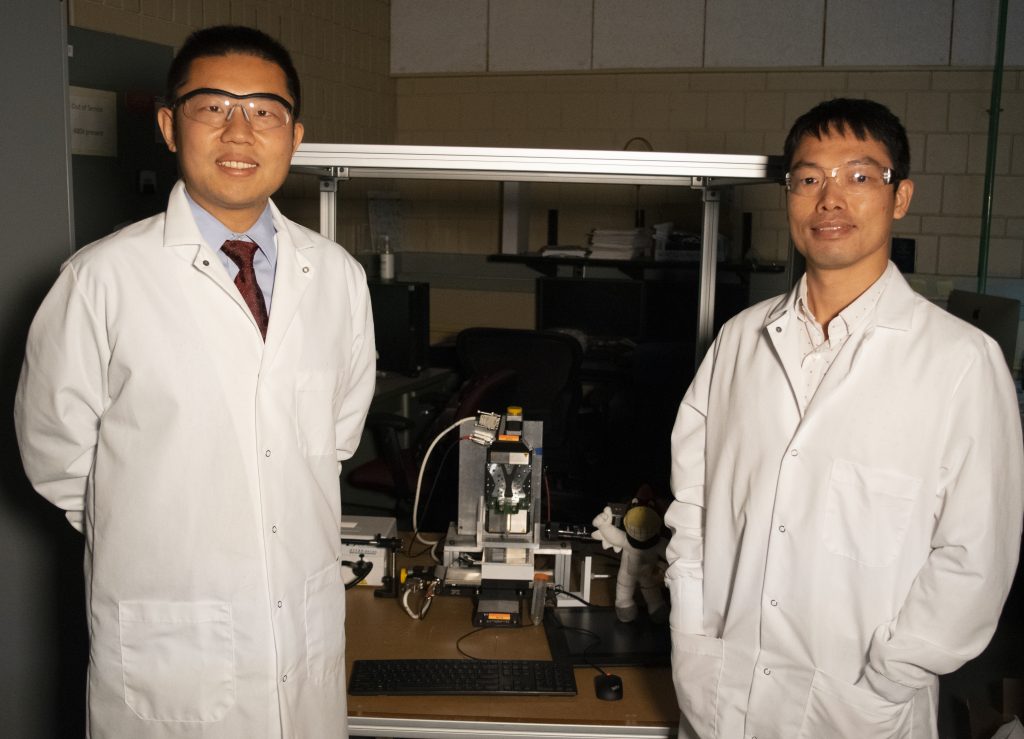Engineers study advanced manufacturing methods in zero-gravity
Author: Nick Fetty
Author: Nick Fetty

A team of engineering researchers at Iowa State University is studying the most effective ways for manufacturing materials in outer space, with the hope that astronauts can use these methods while on space missions.
During space missions it is common for sensors to malfunction and for other equipment to break, so the researchers aim to develop the most effective methods for 2D and 3D printing of electronic components in a zero-gravity environment, such as space. The ability to manufacture these materials in space lessens the need for astronauts to bring excess materials on a mission which lessens the spacecraft’s weight load, according to the researchers. Humidity sensors, for example, are crucial to the safety of astronauts and scientists aboard the International Space Station. These sensors need to be repaired or replaced quickly and reliably in the event of a malfunction.
“In-space manufacturing is critical for long-term space missions, because it can provide the capability of manufacturing goods in the space environment,” said Hantang Qin, assistant professor of industrial and manufacturing systems engineering (IMSE).
The roughly $420,000 project – titled “3D printing of flexible electronics for in-space manufacturing via parabolic flight tests” – is supported by NASA and led by Qin, along with Shan Jiang, assistant professor of materials science and engineering (MSE), who also has a courtesy appointment in IMSE. Additional support will be provided by graduate students and postdoctoral researchers from IMSE and MSE. Qin’s lab will study the electrohydrodynamic inkjet printing mechanism and assembly of the printers for parabolic flight tests, while Jiang and his team developed a unique nano-ink that is specially designed for 3D printing. The ink is ultra-stable and enables high resolution printing.
To test their manufacturing methods in a zero-gravity environment the researchers will utilize parabolic flight tests. “Parabolic flights reproduce gravity-free conditions in an aircraft by alternating upward and downward arcs interspersed with level flight. They provide a microgravity environment for scientists to conduct research without going into space.” Traditional 3D printing relies on gravity so that the materials flow properly. The researchers will study ways to achieve this function without gravity.
“Without gravity, we have to design new mechanisms and generate new forces to replace gravity,” said Qin. “Our team focuses on the study of electrohydrodynamics and applies it for in-space electronics printing.”
In November, the research team will travel to an airbase in Fort Lauderdale, Fla. where they will validate their printing mechanism during parabolic test flights.
“If this test is successful, we will continue this study and look for the possibility of sending a similar printer prototype to the International Space Station to support future space missions,” Qin said.
This project builds upon past work Jiang and his research team have done in nanoparticle synthesis and material formulation. It also builds upon past work Qin and Jiang have done together through the NASA Iowa Space Grant Consortium and the Iowa NASA EPSCoR Research Building Seed Grant program.